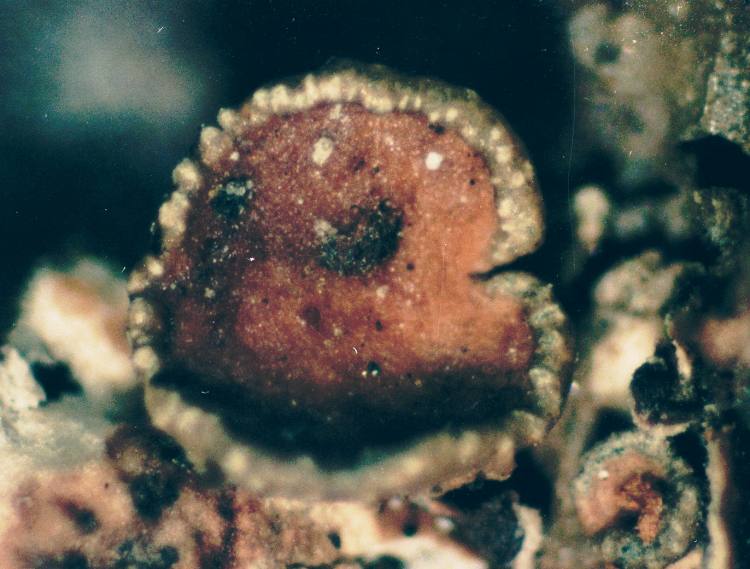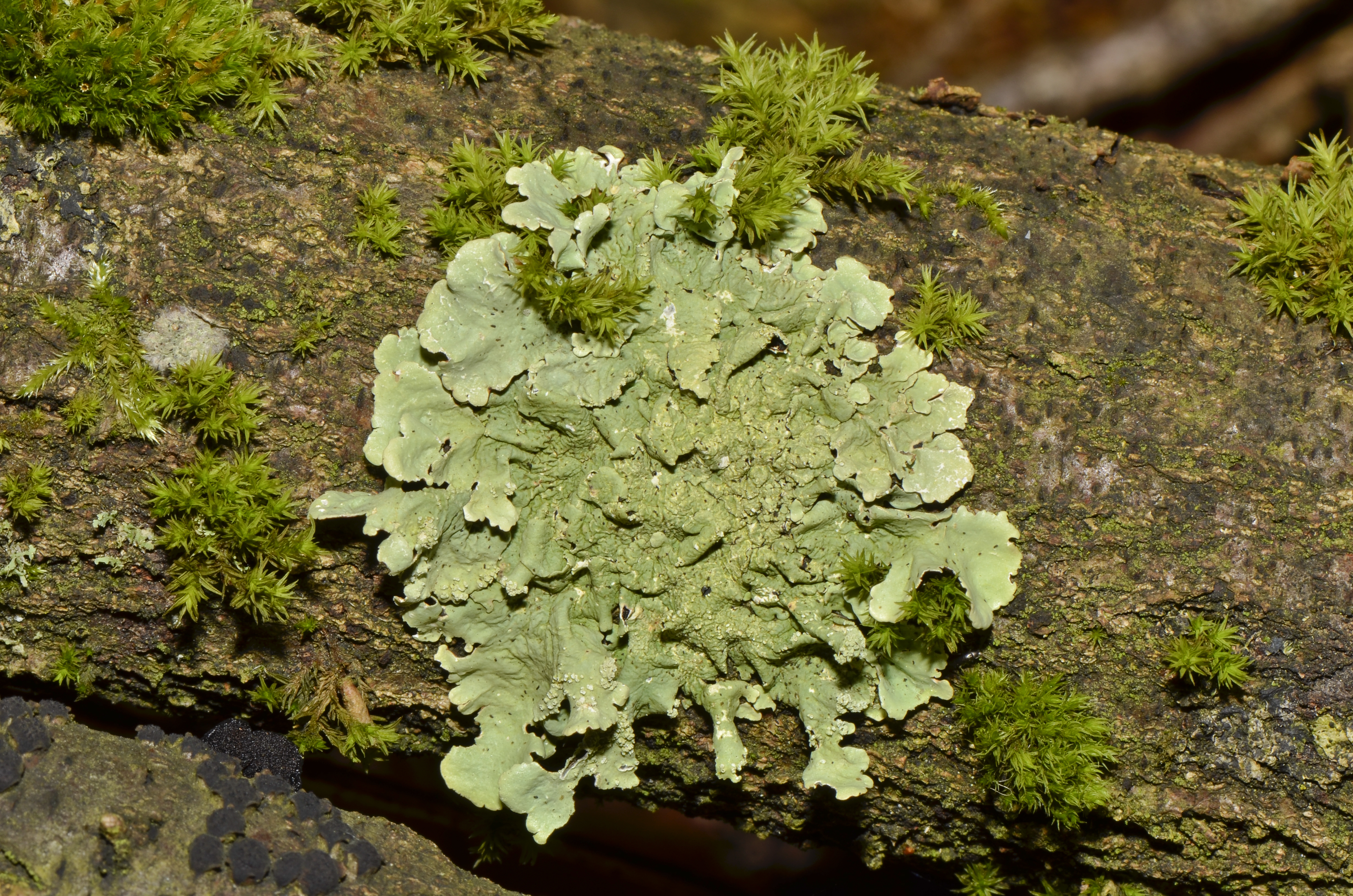|
Melanohalea Beringiana
''Melanohalea beringiana'' is a species of foliose lichen in the family Parmeliaceae. It was described as a new species in 2016. The type was collected near the Richardson Highway, north of Paxson, Alaska, where it was found growing on the bark of a trunk of balsam poplar. The specific epithet In taxonomy, binomial nomenclature ("two-term naming system"), also called nomenclature ("two-name naming system") or binary nomenclature, is a formal system of naming species of living things by giving each a name composed of two parts, bot ... ''beringiana'' refers to its Alaskan distribution. It is morphologically similar to '' Melanohalea olivaceoides'', but is genetically distinct from that species. References beringiana Lichen species Lichens described in 2016 Lichens of North America Taxa named by Helge Thorsten Lumbsch Taxa named by Ana Crespo Taxa named by Pradeep Kumar Divakar Taxa named by Theodore Lee Esslinger {{Parmeliaceae-stub ... [...More Info...] [...Related Items...] OR: [Wikipedia] [Google] [Baidu] |
Lumbsch
Helge Thorsten Lumbsch (born 1964) is a German-born lichenologist living in the United States. His research interests include the phylogeny, taxonomy, and phylogeography of lichen-forming fungi; lichen diversity; lichen chemistry and chemotaxonomy. He is the Associate Curator and Head of Cryptogams and Chair of the Department of Botany at the Field Museum of Natural History. Biography Lumbsch was born in Frankfurt in 1964. Interested in lichens already as a schoolboy, he studied natural sciences at the University of Marburg, under the tutelage of Aino Henssen. He received his diploma in 1989, with a dissertation titled ''Ontogenetisch-systematische Studien der Trapeliaceae und verwandter Familien (Lichenisierte Ascomyceten)'' ("Ontogenic-systematic studies of the Trapeliaceae and related families (lichenized ascomycetes"). After Henssen's retirement in 1990, he transferred to the University in Essen, where he worked on the ''Lecanora subfusca'' group in Australasia, a subject ... [...More Info...] [...Related Items...] OR: [Wikipedia] [Google] [Baidu] |
Morphology (biology)
Morphology is a branch of biology dealing with the study of the form and structure of organisms and their specific structural features. This includes aspects of the outward appearance ( shape, structure, colour, pattern, size), i.e. external morphology (or eidonomy), as well as the form and structure of the internal parts like bones and organs, i.e. internal morphology (or anatomy). This is in contrast to physiology, which deals primarily with function. Morphology is a branch of life science dealing with the study of gross structure of an organism or taxon and its component parts. History The etymology of the word "morphology" is from the Ancient Greek (), meaning "form", and (), meaning "word, study, research". While the concept of form in biology, opposed to function, dates back to Aristotle (see Aristotle's biology), the field of morphology was developed by Johann Wolfgang von Goethe (1790) and independently by the German anatomist and physiologist Karl Fr ... [...More Info...] [...Related Items...] OR: [Wikipedia] [Google] [Baidu] |
Taxa Named By Ana Crespo
In biology, a taxon (back-formation from ''taxonomy''; plural taxa) is a group of one or more populations of an organism or organisms seen by taxonomists to form a unit. Although neither is required, a taxon is usually known by a particular name and given a particular ranking, especially if and when it is accepted or becomes established. It is very common, however, for taxonomists to remain at odds over what belongs to a taxon and the criteria used for inclusion. If a taxon is given a formal scientific name, its use is then governed by one of the nomenclature codes specifying which scientific name is correct for a particular grouping. Initial attempts at classifying and ordering organisms (plants and animals) were set forth in Carl Linnaeus's system in ''Systema Naturae'', 10th edition (1758), as well as an unpublished work by Bernard and Antoine Laurent de Jussieu. The idea of a unit-based system of biological classification was first made widely available in 1805 in the intr ... [...More Info...] [...Related Items...] OR: [Wikipedia] [Google] [Baidu] |
Lichens Of North America
Irwin M. Brodo (born 1935) is an emeritus scientist at the Canadian Museum of Nature, in Ottawa, Ontario, Canada. He is an authority on the identification and biology of lichens. Irwin Brodo was honored in 1994 with an Acharius Medal presented to him by the International Association for Lichenology. Brodo did his undergraduate studies at Columbia University, and received a master's degree from Cornell University. He earned a Ph.D. in lichenology under the supervision of Henry Imshaug at Michigan State University. He later went on to teach at Université Laval and the University of Alaska, and he also supervised master's students at the University of Ottawa and Carleton University. Brodo's list of publications includes 75 research papers, 8 popular articles, 22 reviews and 6 editorials and obituaries. In 1993, Brodie was awarded the Mary E. Elliot Service Award for his meritorious service to the Canadian Botanical Association. One of Irwin Brodo's great achievements was the pu ... [...More Info...] [...Related Items...] OR: [Wikipedia] [Google] [Baidu] |
Lichens Described In 2016
A lichen ( , ) is a composite organism that arises from algae or cyanobacteria living among filaments of multiple fungi species in a mutualistic relationship.Introduction to Lichens – An Alliance between Kingdoms . University of California Museum of Paleontology. Lichens have properties different from those of their component organisms. They come in many colors, sizes, and forms and are sometimes plant-like, but are not s. They may have tiny, leafless branches (); flat leaf-like structures ( |
Melanohalea
''Melanohalea'' is a genus of foliose lichens in the family Parmeliaceae. It contains 30 mostly Northern Hemisphere species that grow on bark or on wood. The genus is characterized by the presence of pseudocyphellae, usually on warts or on the tips of isidia, a non-pored and a medulla containing depsidones or lacking secondary compounds. ''Melanohalea'' was circumscribed in 2004 as a segregate of the morphologically similar genus ''Melanelia''. Taxonomy ''Melanohalea'' was circumscribed in 2004 by lichenologists Oscar Blanco, Ana Crespo, Pradeep K. Divakar, Theodore Esslinger, David L. Hawksworth and H. Thorsten Lumbsch. It is a segregate of ''Melanelia'', a genus created in 1978 to contain the brown '' Parmelia'' species. The circumscription of this genus was questioned later, especially after early molecular phylogenetics studies demonstrated that it was not monophyletic. Subsequently, two genera, '' Melanelixia'' and ''Melanohalea'', were created. ''Melanohalea'' or ... [...More Info...] [...Related Items...] OR: [Wikipedia] [Google] [Baidu] |
Melanohalea Olivaceoides
''Melanohalea'' is a genus of foliose lichens in the family Parmeliaceae. It contains 30 mostly Northern Hemisphere species that grow on bark or on wood. The genus is characterized by the presence of pseudocyphellae, usually on warts or on the tips of isidia, a non-pored and a medulla containing depsidones or lacking secondary compounds. ''Melanohalea'' was circumscribed in 2004 as a segregate of the morphologically similar genus ''Melanelia''. Taxonomy ''Melanohalea'' was circumscribed in 2004 by lichenologists Oscar Blanco, Ana Crespo, Pradeep K. Divakar, Theodore Esslinger, David L. Hawksworth and H. Thorsten Lumbsch. It is a segregate of ''Melanelia'', a genus created in 1978 to contain the brown ''Parmelia'' species. The circumscription of this genus was questioned later, especially after early molecular phylogenetics studies demonstrated that it was not monophyletic. Subsequently, two genera, ''Melanelixia'' and ''Melanohalea'', were created. ''Melanohalea'' original ... [...More Info...] [...Related Items...] OR: [Wikipedia] [Google] [Baidu] |
Botanical Name
A botanical name is a formal scientific name conforming to the ''International Code of Nomenclature for algae, fungi, and plants'' (ICN) and, if it concerns a plant cultigen, the additional cultivar or Group epithets must conform to the '' International Code of Nomenclature for Cultivated Plants'' (ICNCP). The code of nomenclature covers "all organisms traditionally treated as algae, fungi, or plants, whether fossil or non-fossil, including blue-green algae ( Cyanobacteria), chytrids, oomycetes, slime moulds and photosynthetic protists with their taxonomically related non-photosynthetic groups (but excluding Microsporidia)." The purpose of a formal name is to have a single name that is accepted and used worldwide for a particular plant or plant group. For example, the botanical name '' Bellis perennis'' denotes a plant species which is native to most of the countries of Europe and the Middle East, where it has accumulated various names in many languages. Later, the plant w ... [...More Info...] [...Related Items...] OR: [Wikipedia] [Google] [Baidu] |
Foliose Lichen
Foliose lichen is one of the morphological classes of lichens, which are complex organisms that arise from the symbiotic relationship between fungi and a photosynthetic partner, typically algae. This partnership allows lichen to live in diverse climates that can range from cold, dry mountains to wet, warm valleys. Lichens develop quite slowly with recorded growth rates of 0.01–27mm/year depending on the species. Their lifespan averages between 30 and 60 years. Lichens have a main body part called the thallus, which is composed of hyphae, and houses the cortex and medulla. The cortex contains the photosynthetic cells while the medulla allows for gas exchange and makes up the bulk of the lichen's thallus. There are three main types of lichens: crustose, foliose, and fruticose. Foliose lichen are characterised by flattened leafy thalli, and an upper and lower cortex. Many have numerous layers, which are stratified, and aid in identifying different types. Foliose lichens attac ... [...More Info...] [...Related Items...] OR: [Wikipedia] [Google] [Baidu] |
Populus Balsamifera
''Populus balsamifera'', commonly called balsam poplar, bam, bamtree, eastern balsam-poplar, hackmatack, tacamahac poplar, tacamahaca, is a tree species in the balsam poplar species group in the poplar genus, ''Populus.'' The genus name ''Populus'' is from the Latin for poplar, and the specific epithet ''balsamifera'' from Latin for "balsam-bearing". ''Populus balsamifera'' is the northernmost North American hardwood, growing transcontinentally on boreal and montane upland and flood plain sites, and attaining its best development on flood plains. It is a hardy, fast-growing tree which is generally short lived, but some trees as old as 200 years have been found. The tree is known for its strong, sweet fragrance, which emanates from its sticky, resinous buds. The smell has been compared to that of the balsam fir tree. Taxonomy The black cottonwood, '' Populus trichocarpa'', is sometimes considered a subspecies of ''P. balsamifera'' and may lend its common name to this species, ... [...More Info...] [...Related Items...] OR: [Wikipedia] [Google] [Baidu] |




.jpg)

